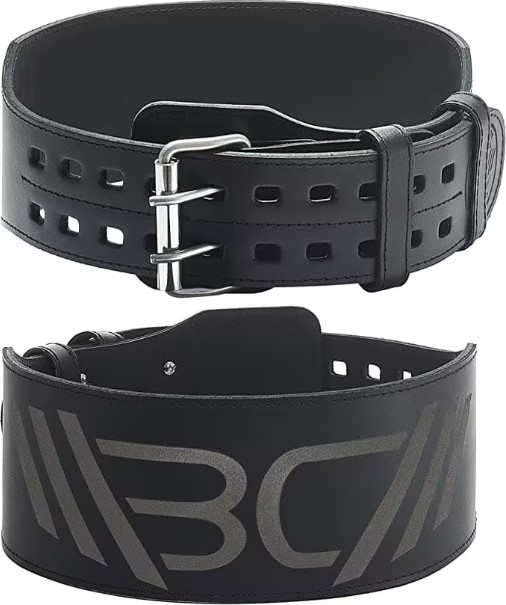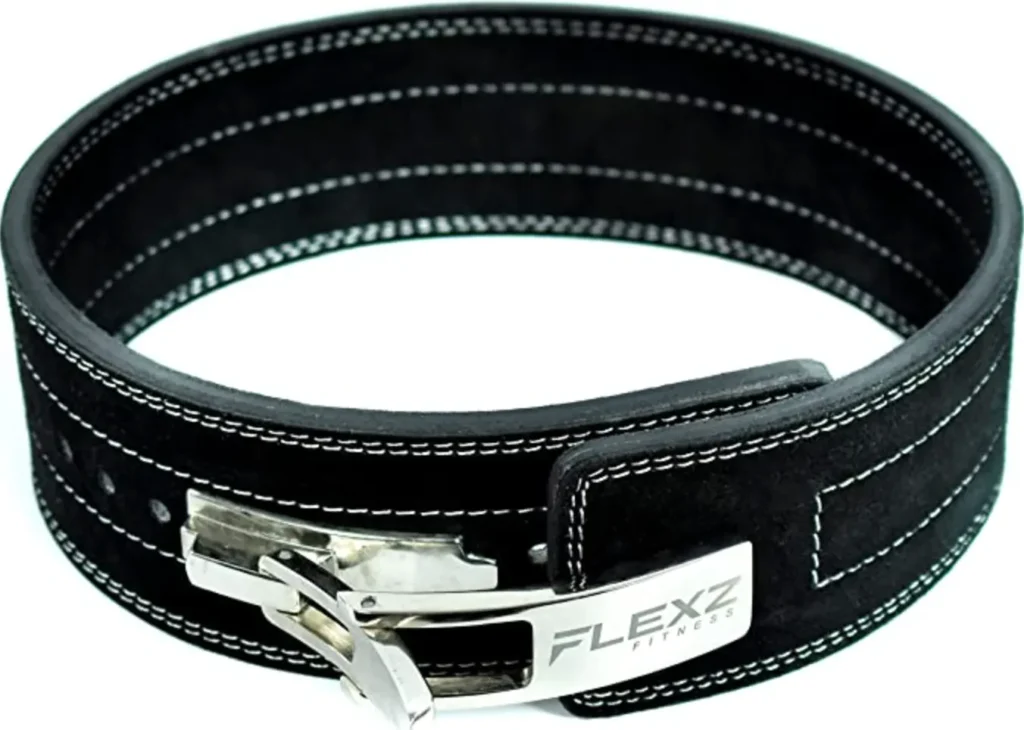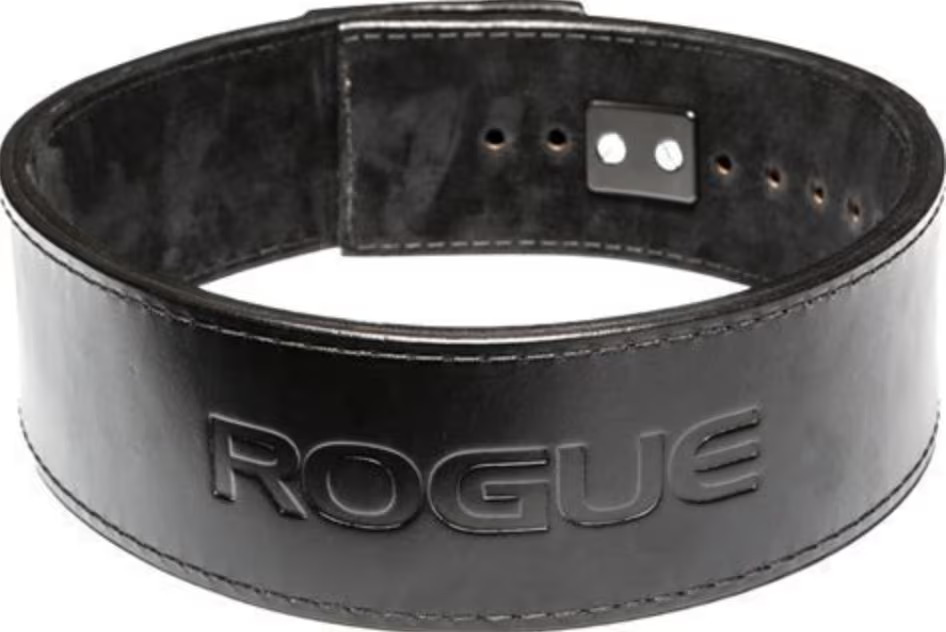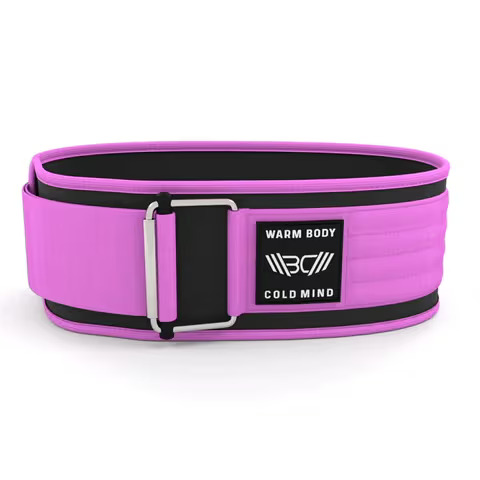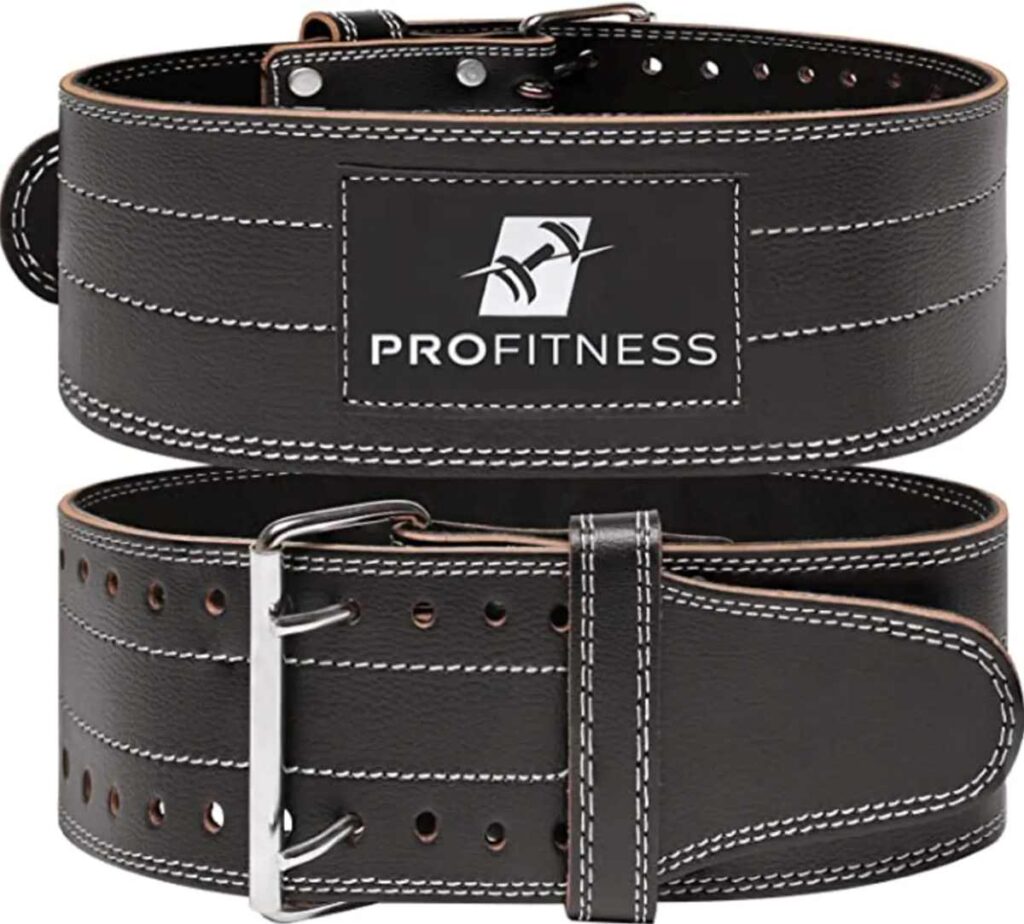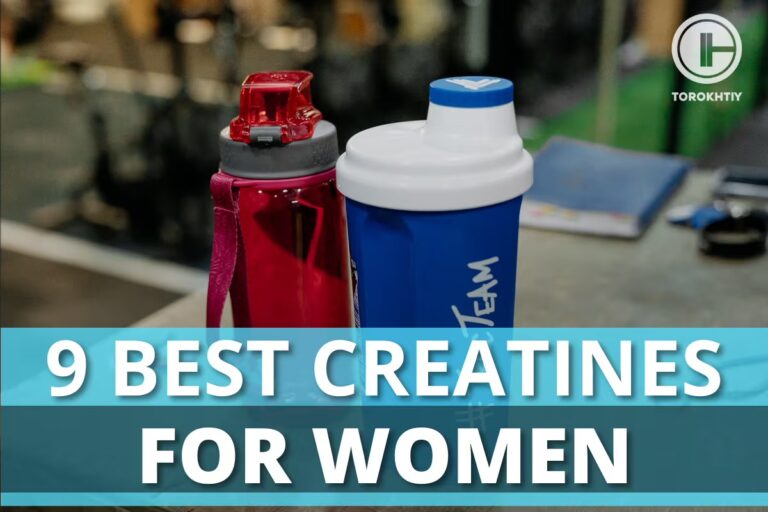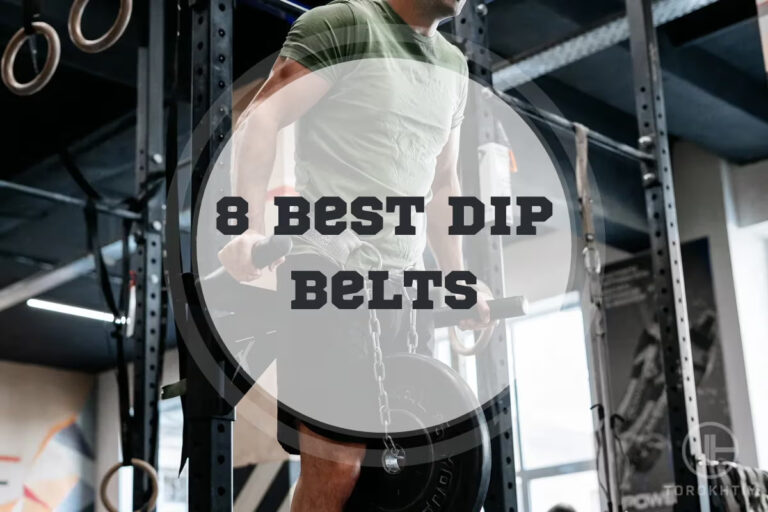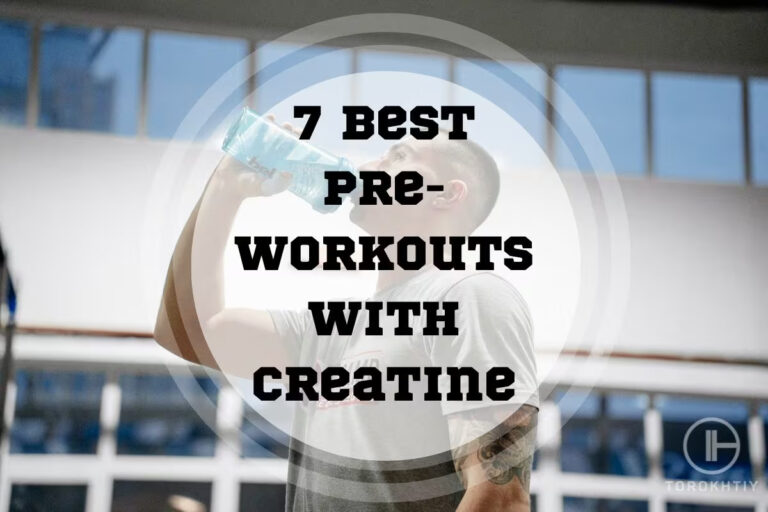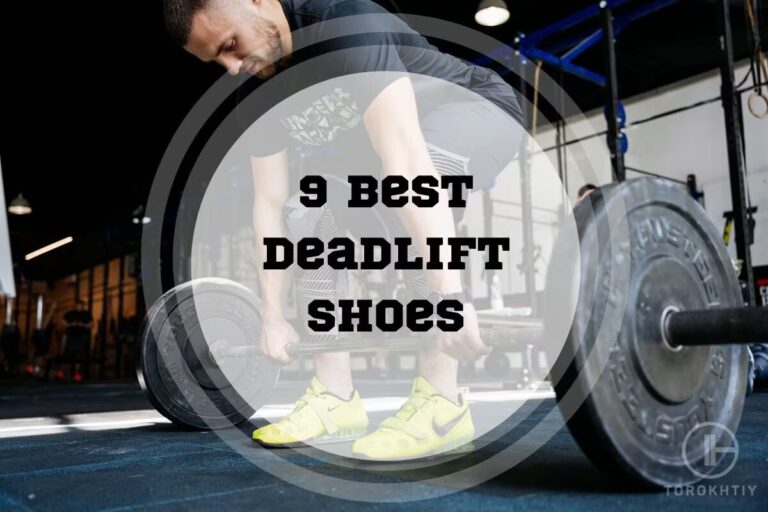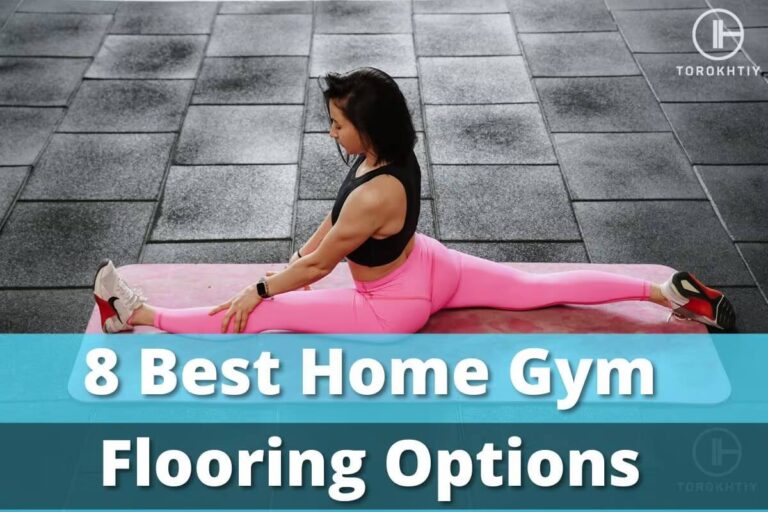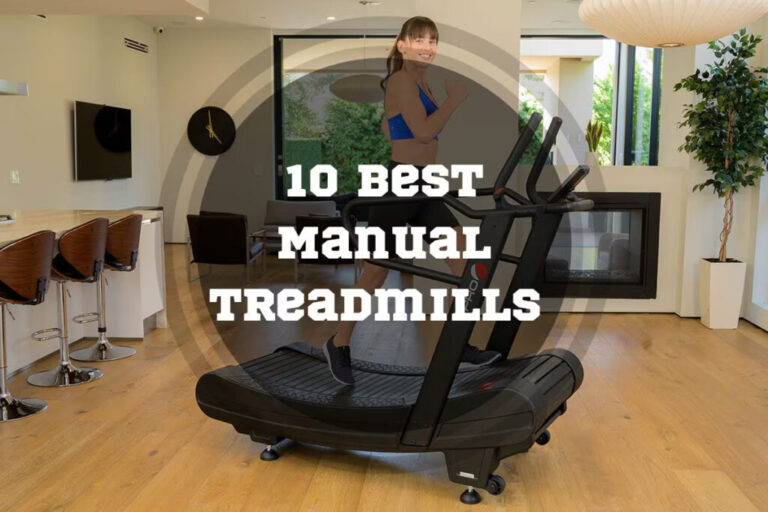5 Best Deadlift Belts in 2025
Reviewed by: Oleksiy Torokhtiy (21 years of Oly Lifting experience)
Lifting belts are quite popular among athletes of all grades. They extend support and safety to the lower back, allowing heavier, otherwise impossible lifts. You won’t miss them as much in any exercise as when pulling deadlifts.
Beat your PRs with these five best deadlift belts.
In a hurry?
In a hurry and can’t keep reading? How about you check out the WARM BODY COLD MIND Leather Belt.
WBCM is an expert-vetted brand. It produces fitness gear to rule out mental exhaustion during tough workouts. A support team of professional trainers remains one call away during the first year of purchase.
Our team of experts, pro athletes and coaches has gone through 10 deadlift belts and they have spent around 40 hours testing them. After the belts were evaluated on 6 key criteria, only 5 of them were considered good enough to make it to this list.
Our team has also analyzed hundreds of online user reviews. This list is updated on a regular basis, so don’t be shy and leave a comment or two!
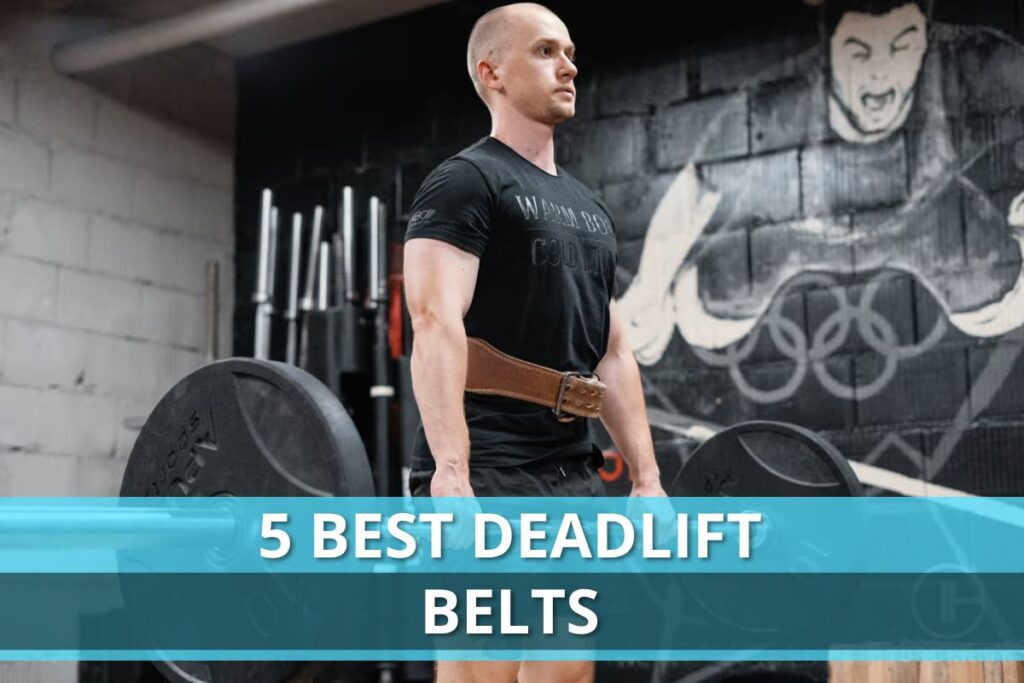
Top 5 Best Deadlift Belts Reviewed
- WARM BODY COLD MIND Leather Belt – Top Pick
- Flexz Fitness Lever Belt – Runner Up
- Rogue Black Leather 13MM Lever Belt – Premium Pick
- WARM BODY COLD MIND Quick Locking Belt
- ProFitness Weightlifting Belt – Beginners Pick
| Product | Total | Performance | Reliability | Comfort | Support | Adjustments | Money Value |
|---|---|---|---|---|---|---|---|
| WBCM Leather | 59.5 | 10 | 10 | 10 | 10 | 9.5 | 10 |
| Flexz | 58.5 | 9.5 | 10 | 9 | 10 | 10 | 10 |
| Rogue | 58 | 10 | 10 | 10 | 10 | 9 | 9 |
| WBCM Nylon | 58 | 9.5 | 9.5 | 9.5 | 10 | 9.5 | 10 |
| Pro Fitness | 57 | 9 | 9 | 10 | 9.5 | 9.5 | 10 |
1. WARM BODY COLD MIND Leather Belt – Top Pick
This plush leather belt with a minimalist design and multi-purpose application is sure to level up your deadlifting game.
- Material: Leather
- Closure Type: Double Buckle
- Sizes: S, M, L, XL, XXL, XXXL
- Waist Size Range: 28”-52”
- Width: 4”
- Thickness: 0.2”
- Certification: IPF, USAPL
WBCM is an expert-vetted brand. It produces fitness gear to rule out mental exhaustion during tough workouts. A support team of professional trainers remains one call away during the first year of purchase.
Its weightlifting belt uses premium leather, not compromising on support or comfort. It’s extremely hard-wearing. A regular increase in one-rep max will put no sign of wear and tear. Still, smooth edges ensure a safe range of motion.
Available sizes start from 28″ and climb up to accommodate strongman-type 52” waists. However, the lack of a smaller variant might hinder a few athletes.
The locking mechanism makes it the best belt for deadlifting. A double roller buckle has a strong clasp and corrosion resistance. It doesn’t cease the support amid power lifts. Also, you can adjust or take it off quickly.
After all, the approval from powerlifting associations speaks for WBCM belts’ quality and durability.
This plush leather belt with a minimalist design and multi-purpose application is sure to level up your deadlifting game.
Positives:
Could be better:
2. Flexz Fitness Lever Belt – Runner Up
This heavy-duty belt gives unwavering support to serious and recreational powerlifters when they choose to push boundaries.
- Material: PU Leather
- Closure Type: Lever
- Sizes: XS, S, M, L, XL, XXL
- Waist Size Range: 24”-48”
- Width: 4”
- Thickness: 0.4”
- Certification: IPF, USAPL
Flexz Fitness kept the belt’s width uniform and doubled its thickness for constant but enhanced pressure. You can hit your maximum potential with this deadlift waist belt's frequent and explosive use.
It boasts a premium look with polyurethane construction. Don't mistake it for leather. But it has a double-stitched inner lining of black suede. Unlike genuine leather, it is easy to clean and break in.
The manufacturer stands behind every single piece. You'll get a lifetime warranty and various colors and sizes. An extra-small size is also added, lowering the range to 24".
There are ten holes for adjustments. But stick to the size chart. The next marvelous feature is its chrome-finished, quick-release lever. Within seconds, you can scroll through various settings. Check if it’s tightly bolted before starting the lift.
Flexz belts do an excellent bracing job when you break off the deadlift bar or get low in squats. However, it falls short on comfort and softness, especially if you put it on shirtless.
This heavy-duty belt gives unwavering support to serious and recreational powerlifters when they choose to push boundaries.
Positives:
Could be better:
3. Rogue Black Leather 13MM Lever Belt – Premium Pick
When the most expensive equipment is also the best selling, you can’t doubt its performance. Such is the case with the Rogue 13mm lever belt.
- Material: Leather
- Closure Type: Lever
- Sizes: XS, S, M, L, XL
- Waist Size Range: 22”-48”
- Width: 4”
- Thickness: 0.5”
- Certification: IPF
Rogue’s Ohio belt was a hit. But its matte-black variation is a chart-buster. It replaced the traditional buckle with an all-new locking system. Although made out of nickel-plated steel, this lever is also black in color.
The lever brings its fair share of pros and cons.
You quickly get in and out of the belt. And it's fail-proof. Once secured, it never falls off. Simultaneously, you can wear it as tight as you prefer. Therefore, it overtakes both cheap levers and prong buckles in practicality.
Remember, each size caters to nine waistlines. You must fit the lever before use. There are a total of six screws. For once, it's okay. But you can guess the trouble if you're in a commercial gym where belts often change hands.
It is 3lb heavy and half-an-inch thick. Dimensions alone give you an idea that it targets accomplished powerlifters to move hundreds of pounds on a daily basis. If you take out the price and versatility factor from the decision process, it's the best deadlift belt.
If you take out the price and versatility factor from the decision process, it's the best deadlift belt.
Positives:
Could be better:
4. WARM BODY COLD MIND Quick Locking Belt
- Material: nylon, neoprene
- Closure Type: buckle, hook and loop
- Sizes: S, M, L, XL, XXL
- Waist Size Range: 27” - >40”
- Width: 4”
- Thickness: 1.5”
Here we have another WBCM belt for deadlift performance in the list that differs from the rest products reviewed since it’s made of high-quality nylon fabric. It’s a worthy option for intensive workouts that include diverse exercises you should perform in a row, or when you need to put on and take off the belt regularly.
Compared to leather belts, it offers more versatility and flexibility in the waist area that enables an athlete to switch between various movement intensities easily. WBCM uses premium-quality nylon, mesh lining, inner padding, and double stitching that guarantees its lightweight, yet stays highly durable, and snugly fitted.
Meanwhile, it brings enough support for your core and back muscles to prevent strains and injuries while training with heavy weights. The belt is equipped with a self-locking system: a metal buckle and reliable velcro closure for stronger fixation prevent occasional slipping off while working out and still feels comfortable around the waist.
The belt is equipped with a self-locking system: a metal buckle and reliable velcro closure for stronger fixation prevent occasional slipping off while working out and still feels comfortable around the waist.
Positives:
Could be better:
5. ProFitness Weightlifting Belt – Beginners Pick
Newcomers to deadlifting should hold on to support and safety. Correct your form and catalyze your progress with the ProFitness belt.
- Material: Leather
- Closure Type: Buckle
- Sizes: S, M, L, XL
- Waist Size Range: 24”-49”
- Width: 4”
- Thickness: 0.2”
- Certification: USPA
Beginners often get overenthusiastic after smashing a few big hits. You should work on your form, technique, and posture early in your career. Numbers may later follow. It’s essential to not only build strength but also to avoid injuries.
ProFitness offers an inexpensive lifting belt for deadlifts, squats, and other demanding exercises to walk this journey.
They are tailored for dependable lumbar and abdominal support. Made with pure and soft leather, each one is 4” wide. Suede inserts sit for wearability. And double roller buckles increase the adjustability.
Threads and rivets are placed to boost its resilience and aesthetic appeal. Only four sizes cover a sufficient range thanks to precise holes.
You’ll eventually outgrow this belt. It’s neither thick nor tight enough to regulate pressure in core muscles. A safe limit will be 100 lbs. You’ll know your way around deadlifting by then.
Lastly, all belts run small. Size up when purchasing. However, it’s not a deal-breaker because ProFitness has a customer-friendly return and replacement policy.
ProFitness belts are tailored for dependable lumbar and abdominal support, made with pure and soft leather, each one is 4” wide.
Positives:
Could be better:
Why Do Powerlifters Wear Lifting Belts?
Powerlifting tests your strength. And when you approach a new one-rep max, waist support always makes a welcoming addition. From newbies to advanced lifters, most choose a belt to take on heavy loads.
It helps you overcome your workout plateaus and topple personal bests. It also repels acute injuries while doing so.
But how does a simple accessory like a deadlift waist belt achieve it?
1. Increase Intra Abdominal Pressure (IAP)
All three big lifts (deadlifts, squats, and bench presses) require abdominal muscles to initiate movement. The amount you can lift is directly correlated with the stability of your core.
There are two ways to increase IAP. The first one is using the best deadlift belt. It gives your torso a defined anchorage to push against. Another method is a breathing technique that therapists call Valsalva maneuver.
2. Reduce Stress on the Spine
EA Harman (1988) was the first to experiment with the IAP hypothesis. The ultimate results were clear. Belts were found to increase pressure. At the same time, this boost was linked with lower compression of spinal discs.
Therefore, the best belt for deadlifting isn’t only a way to achieve higher ranks. It also reinforces your spine to bear loads and avoid collapse.
Later in 2006, a study on spinal shrinkage concluded that "wearing a tight belt on the back and inhaling before the lift reduces compression forces."
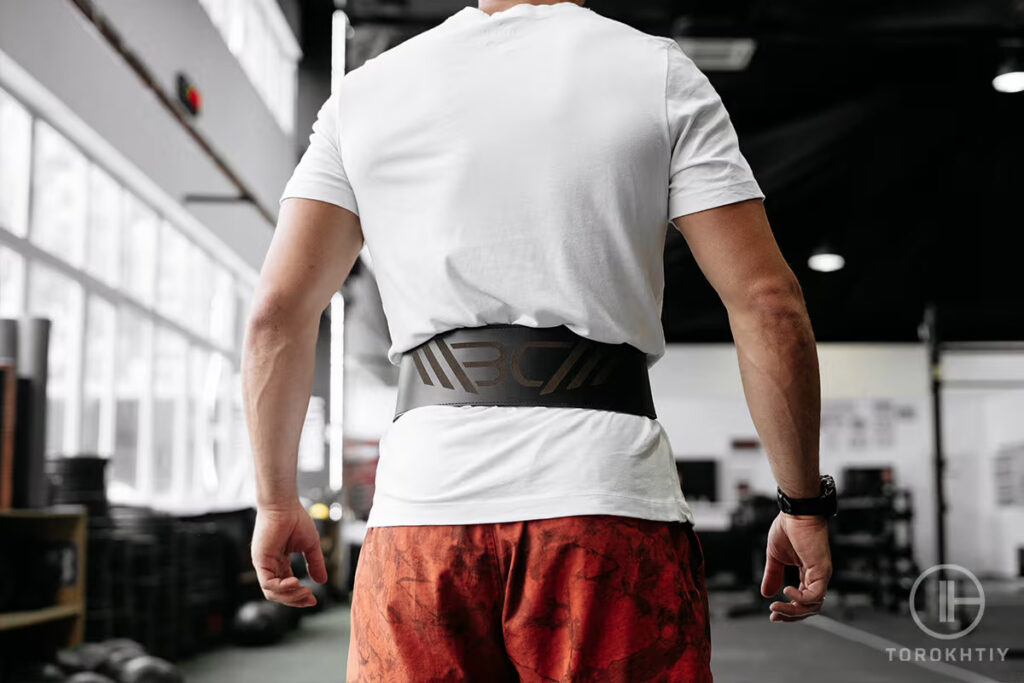
3. Improve Mechanics and Strength
A stable base is critical for heavy lifting. It might feel counterintuitive, but the lower body generates more power. Belts improve biomechanics by restricting spinal bending and enhancing knee flexion.
The deadlift is touted as the king of all compound exercises. It stimulates your legs, glutes, and hamstrings. Many experts suggest beginners to stay away from deadlift weight belts. But they can actually dictate a proper form. And gains are also permanent.
What to look for in deadlift belts?
1. Training
First and foremost, the nature of sports will make a difference. Are you going to appear in powerlifting or strongman competitions? Or perhaps, you're only surviving metcon programs of athletes.
Afterward, it boils down to your progress level. If you’re only a beginner and lifting less than a hundred pounds, you can offset thickness and security for a better deal.
No matter the budget constraints, never settle for a short replacement window. Also, spot fishy cheap specs, like genuine leather or lever lock.
2. Design
There are multiple designs. The most common are powerlifting or cylinder belts. As apparent from the deadlift belt reviews section, they tend to have a uniform width and wide abs coverage. This type of belt focuses on stability and a fastening mechanism.
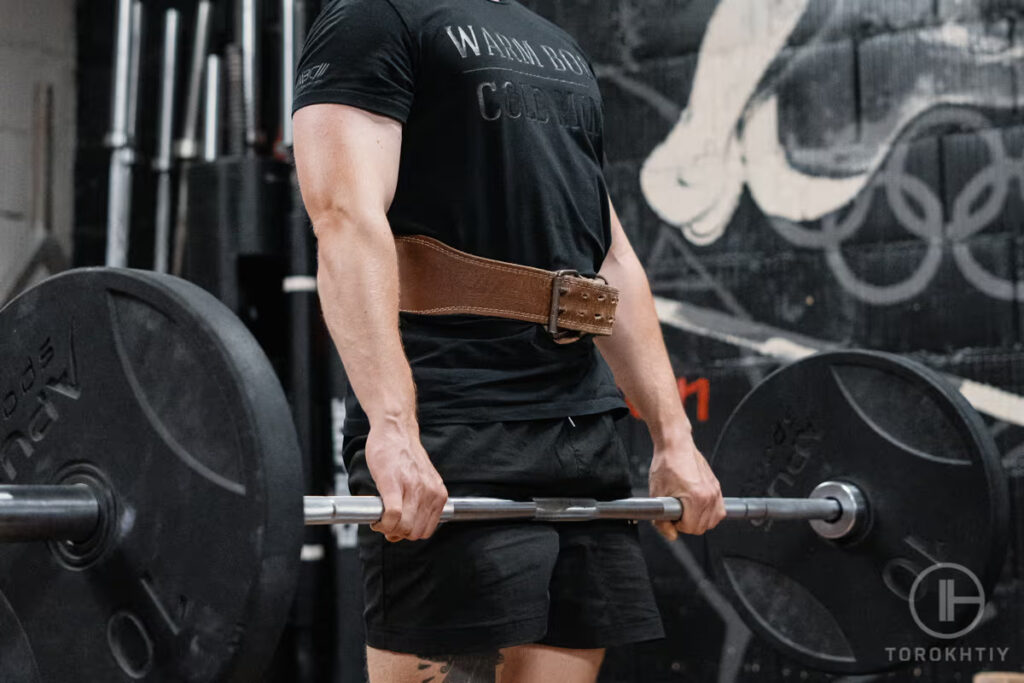
Then we have tapered belts, so the back part is thicker than the front. They might not be the best, but they are a surefire recipe to couple weightlifting movements with deadlifts.
The rationale is to increase mobility without cutting down on the lower back's stability. One variety of contoured belts follows the natural curvature of the back and thins out from the sides only like a cone.
3. Material
Leather is a time-tested option for lifting belts for deadlifts. It’s the strongest material that outlasts every competitor. However, leather belts need a break-in period. In the early days, you might feel the squeeze a bit too much.
A cheaper option is artificial leather. Generally, it's combined with velvety suede, which is the interior of the hide. The most popular man-made material is nylon. Nylon is lighter and simpler to use than leather but not as reliable.
4. Lock
The fastening mechanism is a crucial characteristic to keep an eye on. Not only does it guarantee a snug fit, but it also has to ensure that the belt remains affixed during the training.
The last thing you need during a heavy lift is the sudden halt of support.
All types of hardware are fairly reliable. It depends on personal preference. Velcro is an exception because it isn't that dependable during power lifts, especially if there's no additional layer like Element 26's auto lock.
Prong buckles are traditional. On the other hand, levers are trendy. They bring a secure and sturdy clasp of buckles with greater customization. In comparison, a prong can only sit into given holes.
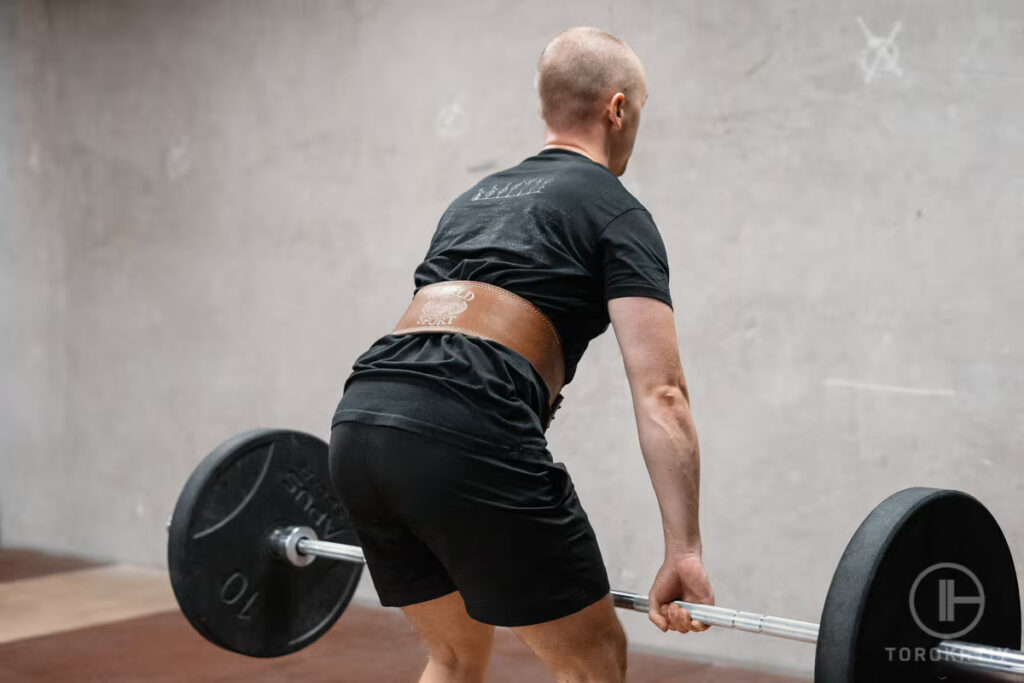
5. Thickness
The thickness of the belt determines the amount of support and pressure. 0.2” (5 mm) is normal. Nonetheless, you can ascend to double or even triple that size. On the other hand, mobility decreases with this increase.
Functional athletes demand plenty of room and nonchalance. For committed powerlifters, the stability of spinal erector muscles is more valuable than swift transition or tightening of the belt in-between sets.
Tips From the Champ
When choosing a belt for the deadlift, you need to consider several factors such as the material, width, thickness, fit, and type of buckle. The material of the belt should be strong enough to offer reliable support during heavy loads. Therefore, it is worth considering belts made of leather or nylon.
In addition, the belt should be comfortable around the waist, without being too tight. For optimal support to the lower back and core muscles, I recommend selecting a width of 4" and a thickness of 0.2".
Some belts come with a double roller buckle, which ensures a secure fit during heavy lifts. By properly fitting the deadlift belt, the bar will feel lighter, allowing your spine to transfer force more efficiently.
Olympic Weightlifting Champion
FAQ
Do Deadlift Belts Help In Powerlifting?
Yes, they help powerlifters build records by increasing intra-abdominal pressure and lower body engagement.
The benefits of a deadlift waist belt remain a contended topic. However, personal experiences witness the miraculous advantages it brings to your deadlifts and squats. One should not make belts a crutch in any case.
How Tight Should A Deadlift Belt Be?
Leaving a finger width between your torso and belt is a rule of thumb. However, you need the maximum support during deadlifts. So, a conservative estimate is allowed.
In any case, you should prioritize comfort. Not all pains beget considerable gains. Training for a correct breathing pattern can also help you lift heavy.
What Do You Wear Under A Deadlift Belt?
You’re not liable to wear anything under a belt.
In fact, you can leave it without or beneath a shirt as belts are more supportive against bare skin. There are no pinching or sliding issues. But competitive athletes already have form-fitting singlets, so belts above stay affixed.
What Size Deadlift Belt Should I Get?
The opportunity to adjust the size of a belt is limited after purchase. Thus, heed the size chart earlier. Many people mistake their pant size as a way forward. That's wrong.
You’re supposed to measure the circumference between ribs and hips (generally around the navel.)
Conclusion
The best deadlift belt is a worthy addition to your fitness escapade. You can safely bypass physical and mental barriers to lift the heaviest weights to date.
Have you ever used a belt? Share your experience in the comments. If not, WBCM offers a gold-standard choice. You get adaptable and reliable support without breaking the bank.
Also Read:
- Do You Need A Belt To Deadlift
- Benefits of Weightlifting Belt
- Deadlift Belt Position
- How To Wear Weight Lifting Belt
- Gymreapers Lifting Belt Review
- Inzer Lever Belt Review
- Best Weightlifting Belt
- Best Pulley System for Home Gym
References:
- Lifting Straps vs Lifting Hooks: Differences, Pros, Cons // PowerliftingTechnique.com: https://powerliftingtechnique.com/lifting-straps-vs-lifting-hooks/
- Effects of a belt on intra-abdominal pressure during weight lifting // Pubmed: https://pubmed.ncbi.nlm.nih.gov/2709981/
- How to Engage the Transversus Abdominis, and Why It's Important // HealthLine: https://www.healthline.com/health/fitness-exercise/transverse-abdominal-exercises
- Anthropometric Predictors of Conventional Deadlift Kinematics and Kinetics // NCBI: https://www.ncbi.nlm.nih.gov/pmc/articles/PMC10128119/
- The influence of weightlifting belts and wrist straps on deadlift kinematics // Journals: https://journals.lww.com/md-journal/Fulltext/2022/02180/The_influence_of_weightlifting_belts_and_wrist.57.aspx
Why Trust Us?
With over 20 years in Olympic Weightlifting, our team does its best to provide the audience with ultimate support and meet the needs and requirements of advanced athletes and professional lifters, as well as people who strive to open new opportunities and develop their physical capabilities with us.
All products we select are primarily approved and tested by the Olympic Weightlifting Champion Oleksii Torokhtiy. Under his guidance, we provide honest and reasonable assessments of the products we review by checking their characteristics, packaging, design, comfort and durability features, and general product rating. We select products from only high-quality and trusted sports brands, thus vouching for their quality.
The product testing process is described in more detail here
Author: Ihor Shymechko
Pro Olympic Weightlifter, Coach
Best Results: Snatch – 208 kg,
C&J – 240 kg
Ihor has been a professional weightlifter since 1996, boasting over two decades of competition experience. His notable achievements include clinching the European Championship in 2009 and securing a silver medal in the 105kg division at the Senior World Championships in 2011. Ihor represented his country in the 2008, 2012, and 2016 Summer Olympics. After retiring from competitive weightlifting, he transitioned to coaching, leveraging his vast experience to guide athletes who now compete on both national and international stages.
Reviewed by: Oleksiy Torokhtiy
Olympic Weightlifting Champion
Best Results: Snatch – 200 kg,
C&J – 240 kg
Oleksiy Torokhtiy is a professional athlete boasting 20 years of experience in Olympic weightlifting. With multiple European and World titles under his belt, he has showcased his prowess in two Olympic Games (Beijing 2008 and London 2012). Upon concluding his illustrious career, Oleksiy dedicated himself to coaching. By 2022, he had conducted over 200 weightlifting seminars worldwide. He is the visionary behind an international sportswear and accessories brand known for its motto, “Warm Body Cold Mind.” Additionally, he is an esteemed author and the creator of a series of training programs and eBooks.
If you have any questions/suggestions/any other inquiries considering product reviews, you can reach out to us via email – [email protected]

